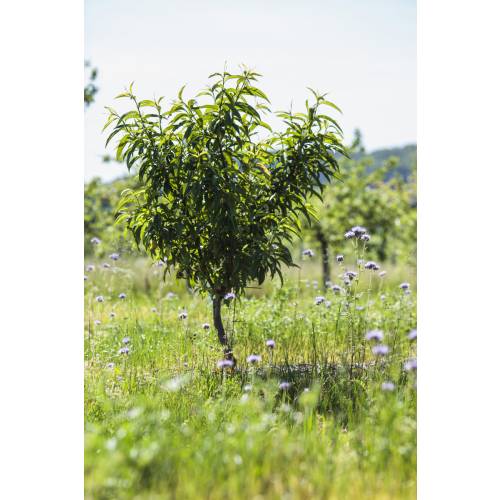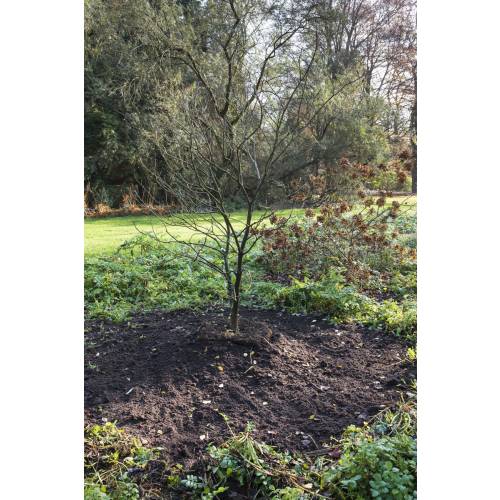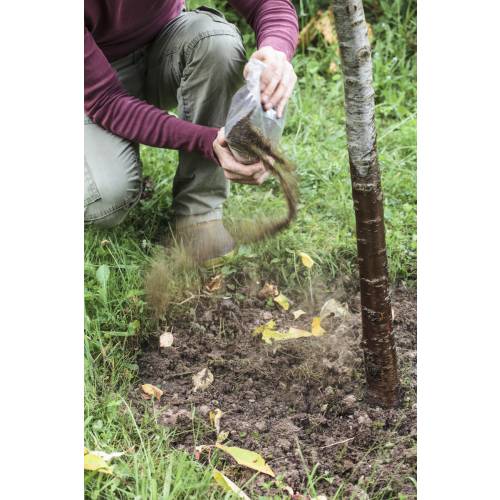
Cure
Help a young tree
- Details
-
A tree is not a plant like the others as it is there for a long time. But as it grows slowly, you must give it the best growing conditions for it to thrive as soon as possible.
Limit the competition
The first tree's enemy is tall grass. Because its roots are still superficial, a young tree must share the same space than grass' roots. Therefore you must remove the grass until the tree is strong enough to no longer be easily damaged by it. This happens when the tree trunk reaches 7cm of diameter at its base, which requires weeding this area during several years. This grass' removal can take place all year round but the beginning of spring, before the weeds start growing is the best time to do it.
Good to know : A chemical weeding at the tree's bases is sometimes used, with a specific weed killer. It is not particularly recommended as it harms the tree's good health over time (and sometimes instantly, if a product's mistake is made!).
Feed gently
Little by little, the tree spreads its roots towards the most fertile areas. But a little help with a slow release, horn-based fertiliser is always appreciated. If you lack of time, simply spread the powder around the tree's base in autumn or winter. But if you have time, it is best to incorporate the powder (at a rate of two soupspoons) at the bottom of a hole of 10cm in depth, 1m away from the trunk: do this four times around the tree. A quick acting fertiliser can be considered during the spring if you have missed the winter's feeding or if your soil is really poor. Respect scrupulously the dose indicated on the packaging.
If you have placed a tablet of slow-release fertiliser at the bottom of the hole at planting time, please be aware that it is only effective for one year.
Place a stake the right way
Facing wind, a tree gets distorted and grows sideways, even if the winds are not intense: it's the wind-trimmed tree effect (anemomorphose). Only a suitable support will avoid this problem. Plant a stake alongside the trunk attaching it either with a specific tie, or a piece of inner tube (to be changer each year). Another technic consists in placing the stake going at a slant of 45°, facing the wind and to attach the trunk with a flexible le tie at a height of 60cm. The freedom of movement kept at the top of the tree reinforces the rooting facing strong wind.
Must I prune?
A young tree can be shaped easily. Even with conifers which do not always need pruning, you can accelerate the natural movement by removing the low branches to force the upright ones to develop. Beware: do not remove more than a quarter of the branches at the maximum. This operation is not useful unless you need space at the base, for example to plant shade-loving plants in a small garden. On the other hand, if a branch breaks as a result of strong wind, cut it a few centimetres below: never leave a damaged branch in situ. - Photos (5)





